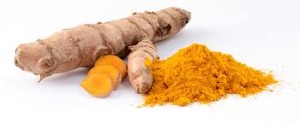Turmeric: A Natural Spice For The Treatment Arthritis
(Curcuma domestica, Curcuma)

Many of my readers at The Rapid City Chiropractor have probably never heard of Turmeric, much less the health benefits of this spice. I have recently visited with more and more patients who have found significant relief from neck, back, or joint pain by taking this supplement. Therefor, I decided to check it out. Below are a few facts and interesting points. As with any supplement, check with your healthcare provider prior to starting a new regimen.
Turmeric’s Origin
The turmeric plant’s ground roots are the source of the yellow powder known around the world as turmeric. It is a close relative to the ginger family, which is also a frequent ingredient in curries. Indonesia and India are where the plant is found. In turmeric, the key chemical ingredient is curcumin.
Health Claims Of Turmeric
Turmeric has been used for centuries to treat the stiffness, inflammation, and pain associated with both osteoarthritis and rheumatoid arthritis. In addition, people who suffer from bursitis regularly use it for relief. In India, it is commonly prescribed as an aid to digestion due to its reputation as a cleansing agent.
Turmeric Facts
Traditionally, turmeric has been used in Indian Ayurvedic and Chinese medicine due to the ability of curcumin to block the enzymes and cytokines that cause inflammation. In fact, the prescription medication Celebrex (celecoxib) is used to target cyclooxygenase-2 (COX-2), which is also targeted by turmeric.
Studies On Turmeric
There is evidence that turmeric’s active ingredient, curcumin, does modify the immune system, thereby reducing inflammation in recent studies. A study performed in 2006 found that it is less effective at reducing existing inflammation than it is at preventing the inflammation in the first place.
Meriva, a turmeric supplement consisting of three parts turmeric to one part phosphatidylcholine, was discovered to be effective at improving the knee functionality while reducing pain in patients with osteoarthritis over the long term in a 2010 study.

In patients with active rheumatoid arthritis, a small 2012 pilot study found that BCM-35, made from curcumin, worked better than a non-steroidal anti-inflammatory drug (NSAID) to reduce swelling and joint pain.
Dosages
Since the extract has fewer contaminants, it is preferred. However, the spice may also be placed into capsules. These typically hold between 400 to 600 mg. They should be taken three times each day. The powered root should be taken three times per day in increments of 0.5 to 1.0 grams.
Only 2% of the spice contains the active ingredient, curcumin. If too much is consumed, it can upset the stomach and act as a blood thinner. If you are already taking Warfarin or other blood thinners, the use of turmeric is not advised.
Finally, if other meds or supplements are not giving you relief, Turmeric might be the answer.
Greg Gruba DC